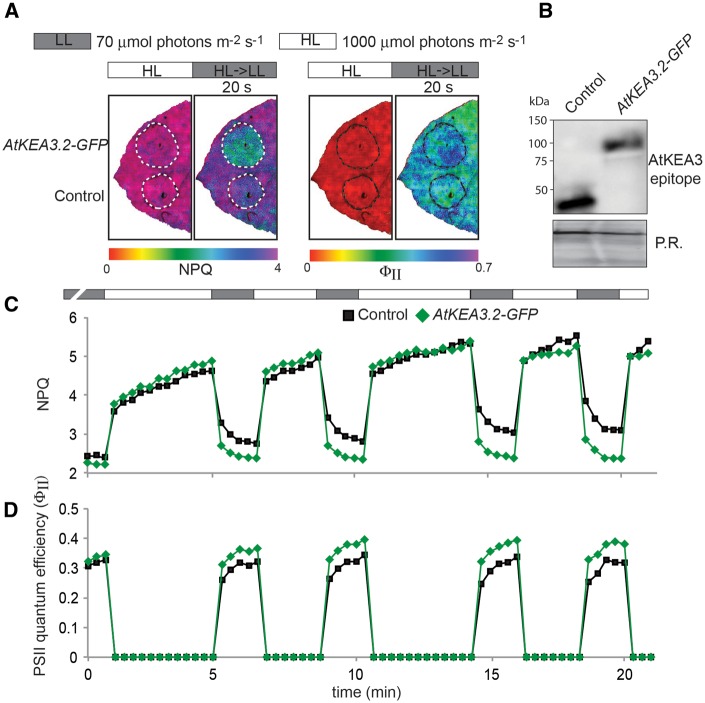Fig. 6.
Overexpression of KEA3.2 in tobacco enhances PSII quantum yield in fluctuating light. (A) Images of a tobacco leaf transformed with either KEA3.2-GFP or GFP fused to the KEA3 antibody-binding site coding sequence at its N-terminus (control) at the end of the high light period (1,000 μmol photons m−2 s−1, white bar; HL) and 20 s after transition from high to low light (70 μmol photons m−2 s−1, gray bar; HL > LL 20 s). False colors represent the NPQ in the left panel and PSII quantum efficiency in the right panel as indicated by the respective color bars. (B) Immunodetection of proteins extracted from the transformed tobacco sections with the specific KEA3 antibody. Ponceau red (P.R.) staining of the membrane prior to immunodetection is shown as a loading control. (C, D) Chl fluorescence of tobacco leaves transformed with KEA3.2-GFP and control was monitored under fluctuating high light (1,000 μmol photons m−2 s−1, white bar) and low light (70 μmol photons m−2 s−1, gray bar), and NPQ (C) and PSII quantum efficiency (D) were calculated. Because of the high background variation in PSII quantum efficiency between different tobacco leaves, a representative trace from one experiment is shown. More traces can be found in Supplementary Fig. S7.

